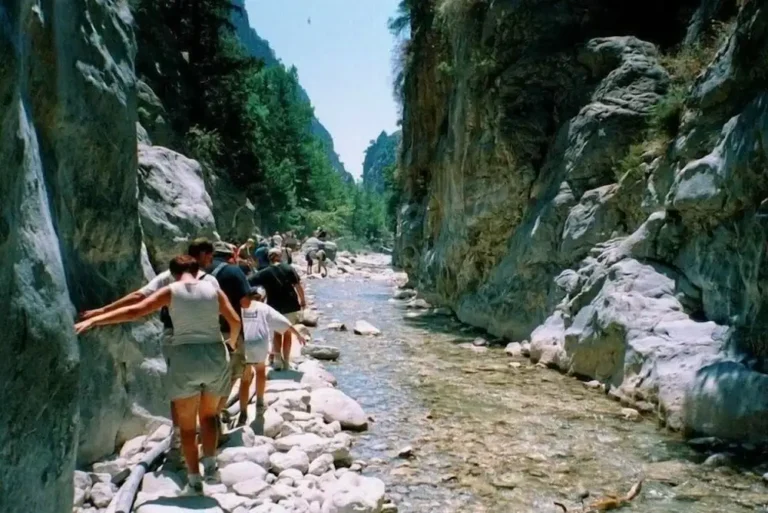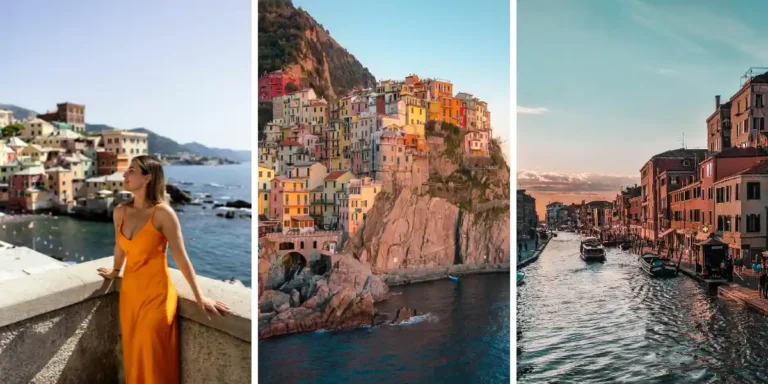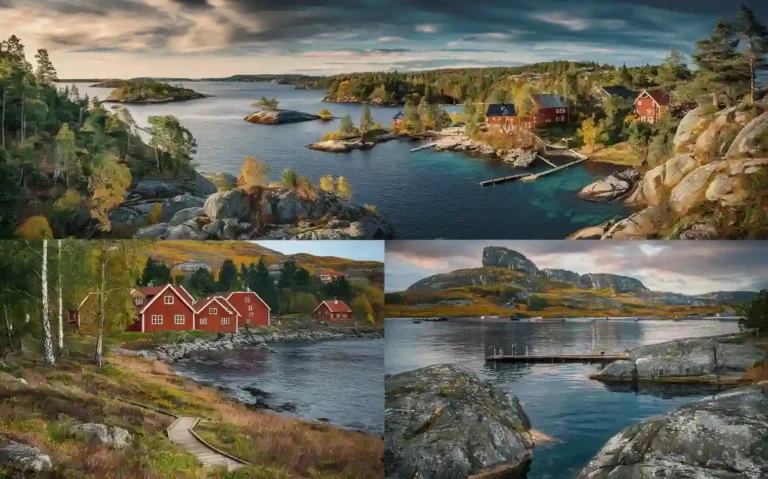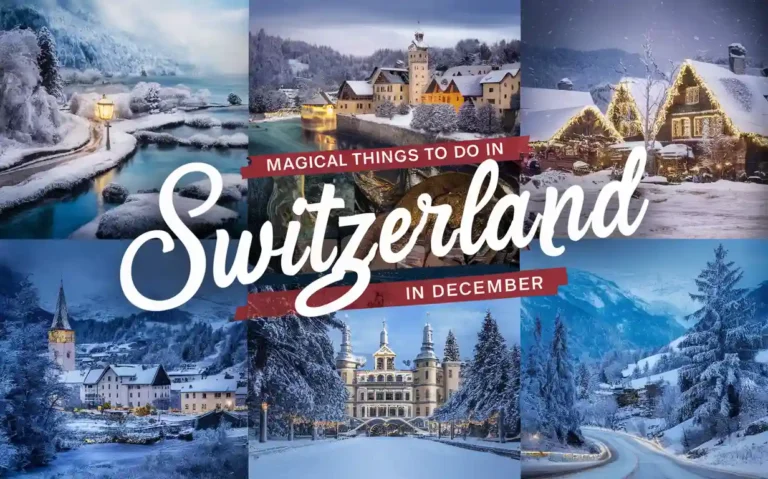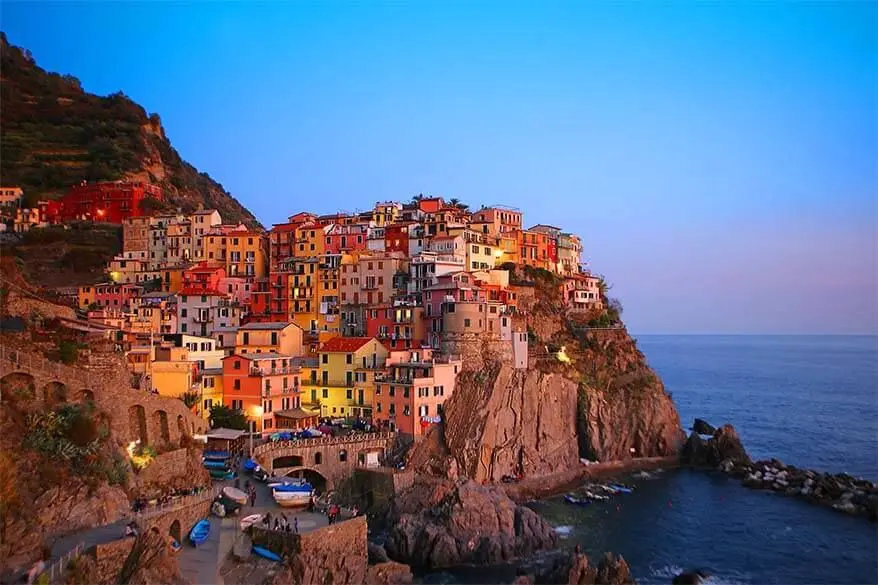
Few places in the world strike the perfect balance between romance, culture, and raw natural beauty the way Italy does. When people ask me about the best coastal cities in Italy, I think back to evenings sipping limoncello as the sun dropped behind Positano’s cliffs, or mornings walking the quiet fishing harbors of Camogli where fishermen still haul in their daily catch. These experiences don’t just stay as photographs—they live in your senses.
Over the last decade, I’ve traveled Italy’s shoreline in nearly every season. Spring in Liguria when the terraced vineyards glow with wildflowers. The height of summer in Puglia when cliff divers plunge into turquoise waters in Polignano a Mare. And those quieter autumn weeks along the Tyrrhenian Sea when Amalfi’s alleys finally belong to locals again.
My perspective comes not from a single visit but from years of repeat journeys, sometimes for work with local tourism boards, sometimes simply chasing that Mediterranean light that never seems to lose its magic.
This guide brings together stories and hard-earned lessons—where to find family-run trattorias that never make it into glossy magazines, how to time your ferry transfers between Naples and Capri, and why certain coastal cities in Italy to visit are best explored in shoulder months when the rhythm slows.
We’ll map out each destination, highlight cultural treasures from UNESCO World Heritage Sites to small-town festivals, and give practical tips on transportation, costs, and local etiquette.
By the end, you’ll not only know the top coastal cities in Italy, but also how to experience them with depth—whether your dream is a romantic escape to Portofino, a budget stay in Tropea, or a cliffside adventure in Vernazza.
Simply put, Italy’s coastline feels like paradise because it’s not just scenery; it’s lived culture, layered history, and everyday rituals that unfold by the sea.
Coastal Italy at a Glance (Map + Quick Travel Planner)
Before diving into the details, it helps to see the bigger picture. Coastal Italy stretches across multiple seas—the Adriatic, Tyrrhenian, and Ligurian—each shaping the character of its towns.
A quick look at the coastal cities in Italy map shows just how varied the experiences are: Venice floats on the Adriatic lagoons, while Tropea sits perched dramatically above the “Coast of the Gods” in Calabria.
Here’s a quick-scan planner I often sketch for friends planning their first trip:
| City | Region | Vibe | Closest Airport/Train Hub | Best Season |
|---|---|---|---|---|
| Venice | Veneto | Romantic, Cultural | Venice Marco Polo Airport | Spring/Fall |
| Trieste | Friuli Venezia Giulia | Historic Blend | Trieste Airport | Spring |
| Portofino | Liguria | Luxury Escape | Genoa Airport | Summer |
| Camogli | Liguria | Budget-Friendly, Authentic | Genoa Brignole Station | Year-Round |
| Vernazza | Cinque Terre | Adventure, Scenic | La Spezia Centrale | Spring/Fall |
| Positano | Amalfi Coast | Iconic Romance | Naples International Airport | May–Sept |
| Amalfi | Campania | Compact, Cultural | Naples Airport / Salerno Port | Spring/Fall |
| Sorrento | Campania | Family Hub | Naples Airport | Year-Round |
| Tropea | Calabria | Authentic, Budget | Lamezia Terme Airport | Summer |
| Polignano a Mare | Puglia | Adventure, Cliff Diving | Bari Airport | Summer |
| Taormina | Sicily | Luxury, Historic | Catania Airport | Spring/Fall |
| Cefalù | Sicily | Beaches + History | Palermo Airport | Summer |
Pro Tip: If you have a week, combine Sorrento with a ferry trip to Capri and Amalfi. With two weeks, you can pair Cinque Terre’s rugged beauty with Puglia’s Adriatic charm.
How to Choose the Right Coastal City for Your Trip
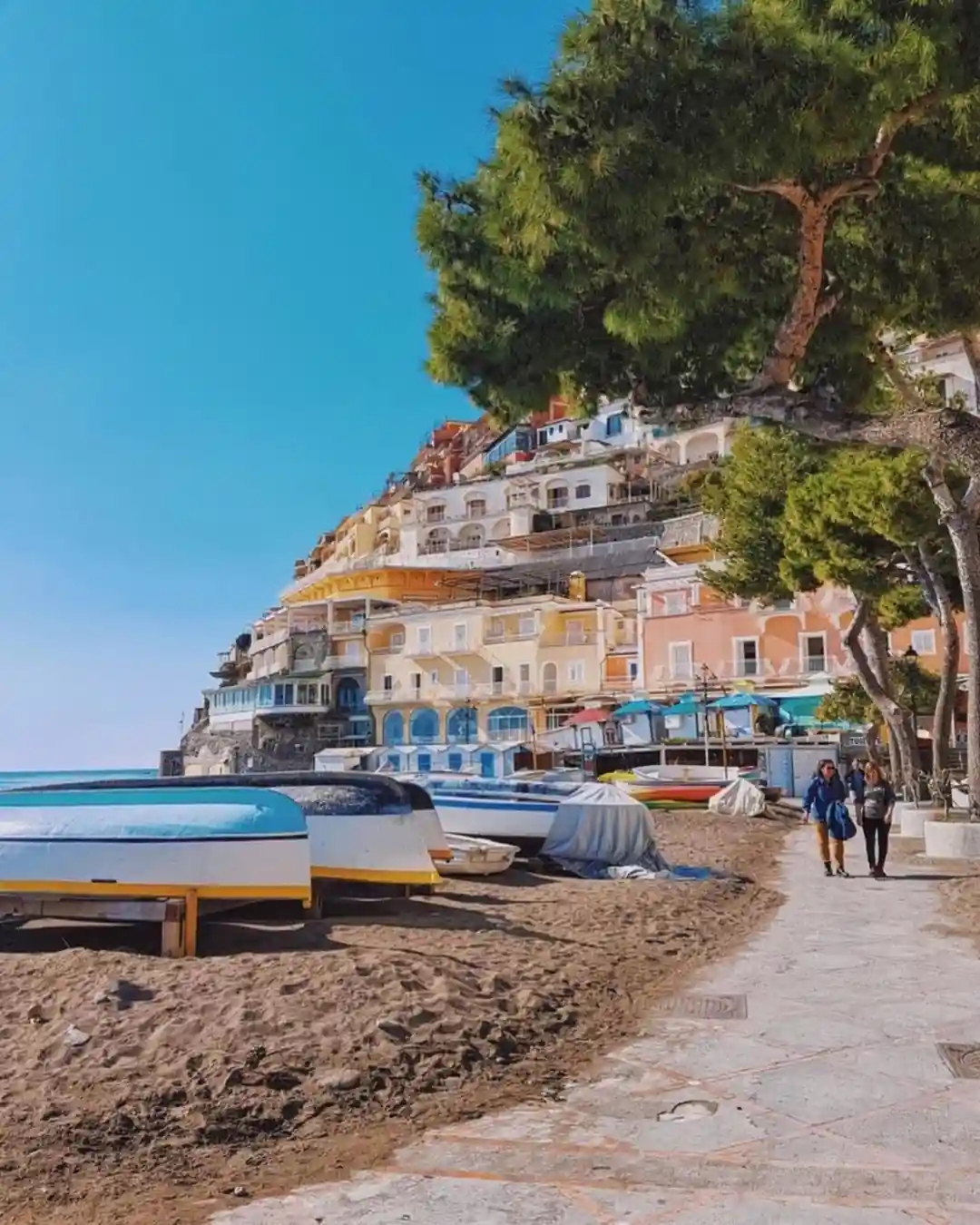
Not every traveler wants the same thing from a seaside escape. Over the years, I’ve noticed friends and readers often struggle between icons like Amalfi and hidden gems like Camogli. The trick is to match your style to the right place.
- Romantic escapes: For honeymoons or anniversaries, you can’t go wrong with Positano’s cascading pastel houses or the elegance of Portofino, where yachts line the harbor. Ravello, though not coastal but perched above Amalfi, adds music festivals and sweeping views.
- Family-friendly hubs: Sorrento is unbeatable thanks to easy transport links, plenty of family services, and day trips to Pompeii. Cefalù in Sicily offers sandy beaches with shallow waters. Camogli, with its walkable center and safe harbor, is also a surprise hit with kids.
- Luxury seekers: Both Portofino and Taormina deliver. I’ve stayed in Taormina where balconies look out to Mount Etna—few places feel more cinematic.
- Adventure travelers: If hiking or cliff-jumping calls you, head to Vernazza in the Cinque Terre, Polignano a Mare, or Tropea’s rugged Costa Viola.
- Budget-conscious: Despite Italy’s reputation for pricey coasts, Camogli and Tropea remain affordable, with small guesthouses and trattorias that feel like time capsules.
Accessibility also matters. Some coastal cities in Italy near Rome like Sorrento or Amalfi are straightforward with train and bus connections, while places like Tropea or Taormina demand more effort but reward you with authenticity.
And don’t underestimate seasonality: summer brings energy (and crowds), but April–June and September–October are when you’ll see Italy at its best—warm seas, fewer tourists, and room to breathe.
Exploring 12 of the Coastal Cities in Italy That Will Steal Your Breath Away
1. Venice (Veneto, Adriatic Coast) – Romance on the Water
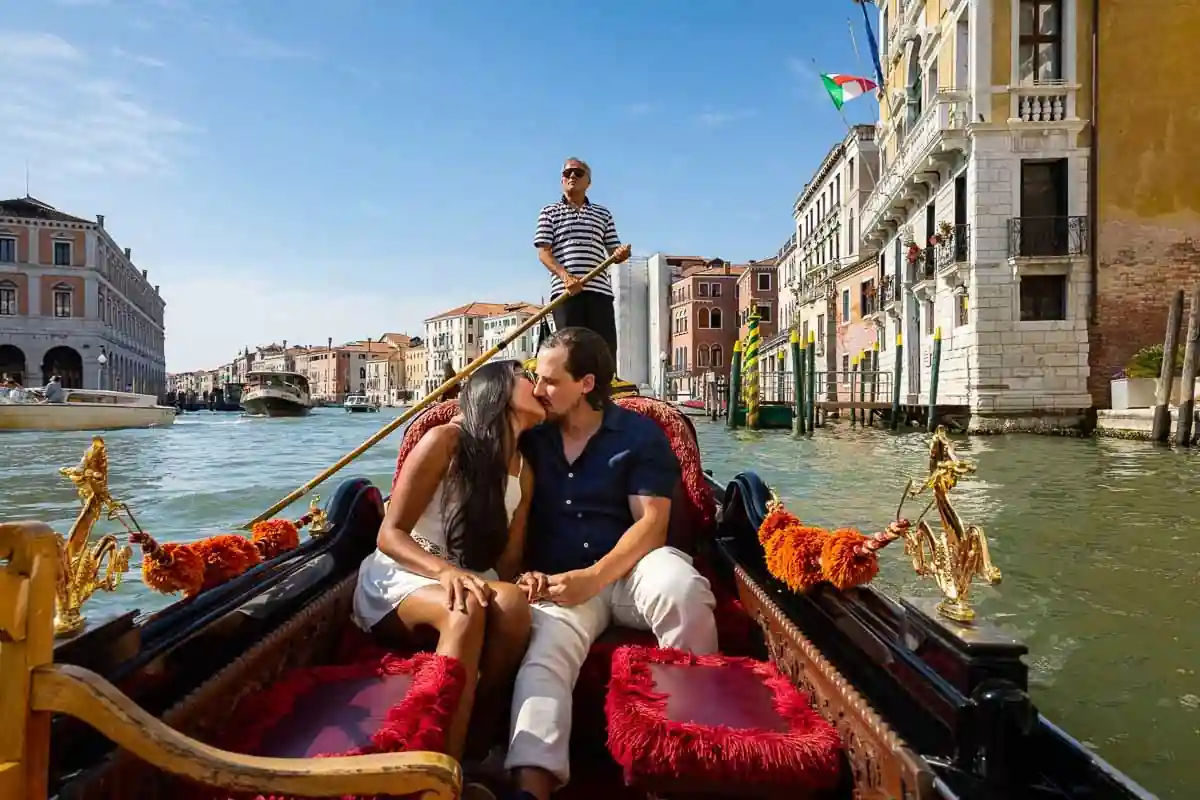
Venice is unlike any other coastal city in Italy because its streets are canals. On my first summer working with Venetian guides, I learned that the magic isn’t only in Piazza San Marco but in quiet sestieri like Cannaregio, where locals still greet each other over morning espresso.
Highlights & Things to Do
- Drift down the Grand Canal on a vaporetto (budget-friendly compared to gondolas).
- Visit the Venetian coast islands—Murano for glass, Burano for lace and those rainbow facades.
- Explore hidden courtyards near Rialto where artisans still carve wood masks.
Food & Drink: Try cicchetti (Venetian tapas) in bacari bars with a spritz. A simple plate of sarde in saor (sweet-sour sardines) tells you more about Venice’s maritime past than any history book.
Best Time to Visit: Spring or early fall when the Adriatic breeze keeps things cool and crowds manageable.
Transport Hub: Venice Marco Polo Airport and Santa Lucia train station connect easily to the rest of Europe.
Where to Stay:
- Luxury: Gritti Palace
- Mid-Range: Hotel Antiche Figure
- Budget: Family-run guesthouses in Cannaregio
Insider Tip: Walk the Fondamenta delle Zattere at sunset—it’s where Venetians stroll without tourist traffic.
Drawback: Summer heat and overtourism can be overwhelming. Acqua alta (seasonal flooding) also disrupts plans, so check forecasts.
2. Trieste (Friuli Venezia Giulia, Adriatic Coast) – Italian–Austrian Blend

Trieste doesn’t always make the list of the most beautiful coastal cities in Italy, but after spending several weeks here during a summer research trip, I’d argue it should.
Perched on the Adriatic near the Slovenian border, Trieste feels more Central European than Mediterranean. You’ll notice it in the grand Habsburg architecture, the Viennese-style cafés, and even in the way locals sip their coffee—Trieste is Italy’s coffee capital thanks to its history as a major port.
Highlights & Things to Do
- Stand in Piazza Unità d’Italia, one of Europe’s largest sea-facing squares.
- Visit Castello di Miramare, the fairytale castle built by Archduke Ferdinand Maximilian overlooking the Gulf of Trieste.
- Wander the Carso hills behind the city for panoramic views of the Adriatic.
Food & Drink: Order a “nero” (espresso) like locals do, and pair it with a strudel instead of tiramisu. Hearty dishes like goulash reflect the Austrian influence, a rarity among Italian coastal towns.
Best Time to Visit: Late spring or early autumn when the bora winds calm.
Transport Hub: Trieste Airport or high-speed trains from Venice (about two hours).
Where to Stay:
- Luxury: Savoia Excelsior Palace
- Mid-Range: Hotel Continentale
- Budget: Guesthouses near Borgo Teresiano
Insider Tip: From the Molo Audace pier, watch the city glow at dusk—it’s where I first understood Trieste’s quiet, cross-cultural soul.
Drawback: The bora winds in winter can be fierce, literally knocking you sideways.
3. Portofino (Liguria) – Luxury Harbor of the Riviera
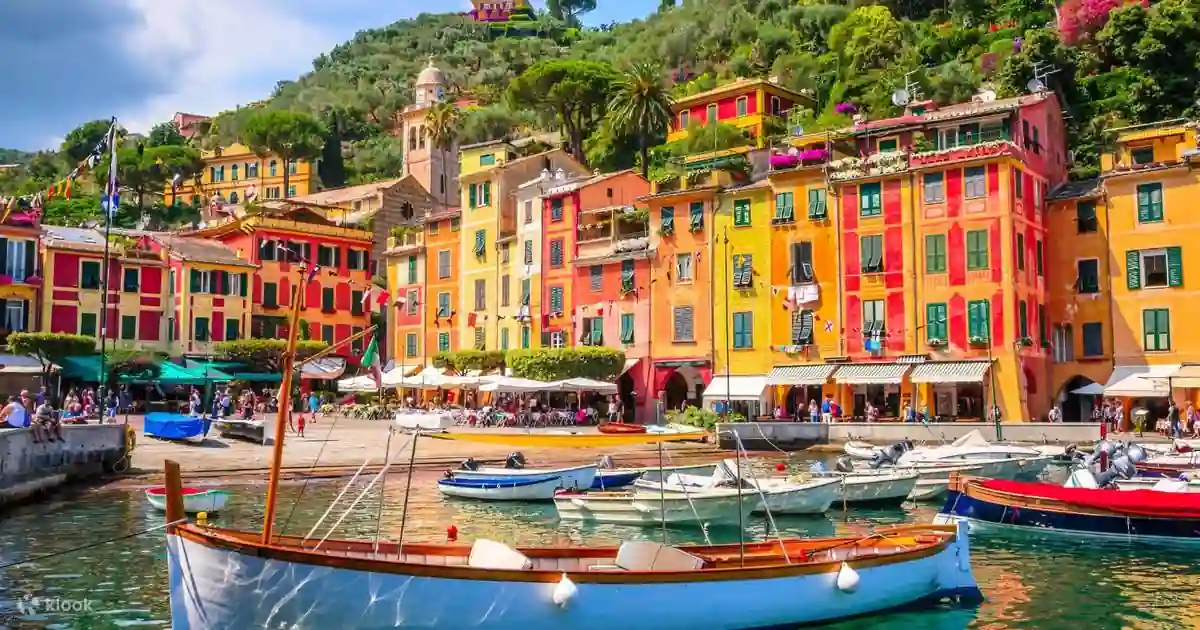
I’ve visited Portofino three times, once during the crowded August season and again in quieter May and late September. It’s true what people say—Portofino is one of the famous coastal cities in Italy, a playground for yachts and luxury.
But beneath the polished harbor, it’s also a small fishing village where locals still gather by the Church of San Giorgio on Sunday mornings.
Highlights & Things to Do
- Hike to Castello Brown for sweeping Ligurian Sea views.
- Visit Splendido Mare, an icon of Riviera hospitality, even if just for an aperitivo.
- Take a boat trip to nearby Santa Margherita or the Abbey of San Fruttuoso tucked in a secluded cove.
Food & Drink: Liguria means pesto—order trenette al pesto and pair it with a crisp white Vermentino.
Best Time to Visit: Shoulder months (May, September) when the port isn’t overflowing with day-trippers.
Transport Hub: Closest airport is Genoa; regular trains connect to Santa Margherita, with bus or boat links into Portofino.
Where to Stay:
- Luxury: Belmond Hotel Splendido
- Mid-Range: Boutique stays in Santa Margherita
- Budget: Camogli (a cheaper base nearby)
Insider Tip: If you wake up before 7 a.m., you’ll see fishermen return with their catch before the luxury yachts start moving—Portofino in its rawest form.
Drawback: Prices here are steep, making it one of the least cheap coastal cities in Italy.
4. Camogli (Liguria) – Authentic Fishing Town
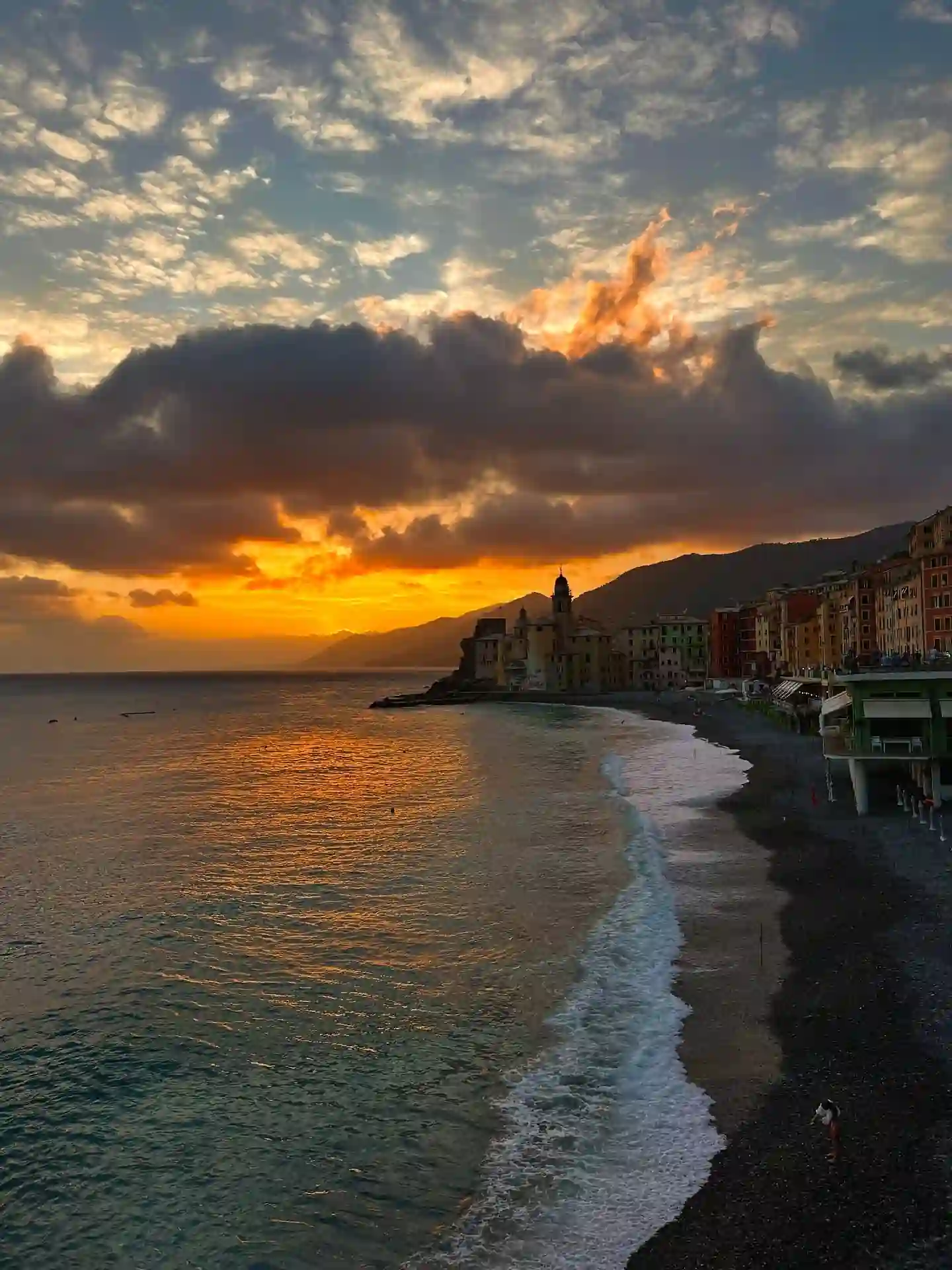
Of all the small coastal cities in Italy, Camogli is my personal favorite. I first came here on the advice of a Genoese friend who said, “If you want the Riviera without the show, go to Camogli.” He was right. The pastel seafront feels cinematic, but the mood is unpretentious—grandmothers still hang laundry from balconies, and the pebble beach fills with locals on summer evenings.
Highlights & Things to Do
- Visit Basilica di Santa Maria Assunta, glowing golden at sunset.
- Explore the Castello dei Doria, perched dramatically over the sea.
- Join a boat trip to San Fruttuoso Abbey, where the Christ of the Abyss statue lies submerged in the Ligurian Sea.
Food & Drink: Focaccia di Recco with cheese is a local specialty you won’t forget.
Best Time to Visit: Summer for festivals like the Sagra del Pesce, when giant pans of fried fish feed the whole town.
Transport Hub: Easy train access via Genoa (Brignole or Principe stations).
Where to Stay:
- Luxury: Splendido Mare (Portofino, short ride away)
- Mid-Range: NH Savona Darsena
- Budget: Local B&Bs on Via Garibaldi
Insider Tip: Take a late evening stroll along the Spiaggia Fornaci—I’ve had some of my most peaceful Ligurian nights here, listening to waves with only locals around.
Drawback: The pebble beach isn’t as soft as Amalfi’s or Cefalù’s sands, so bring sturdy sandals.
5. Vernazza (Cinque Terre, Liguria) – Postcard-Perfect Cove
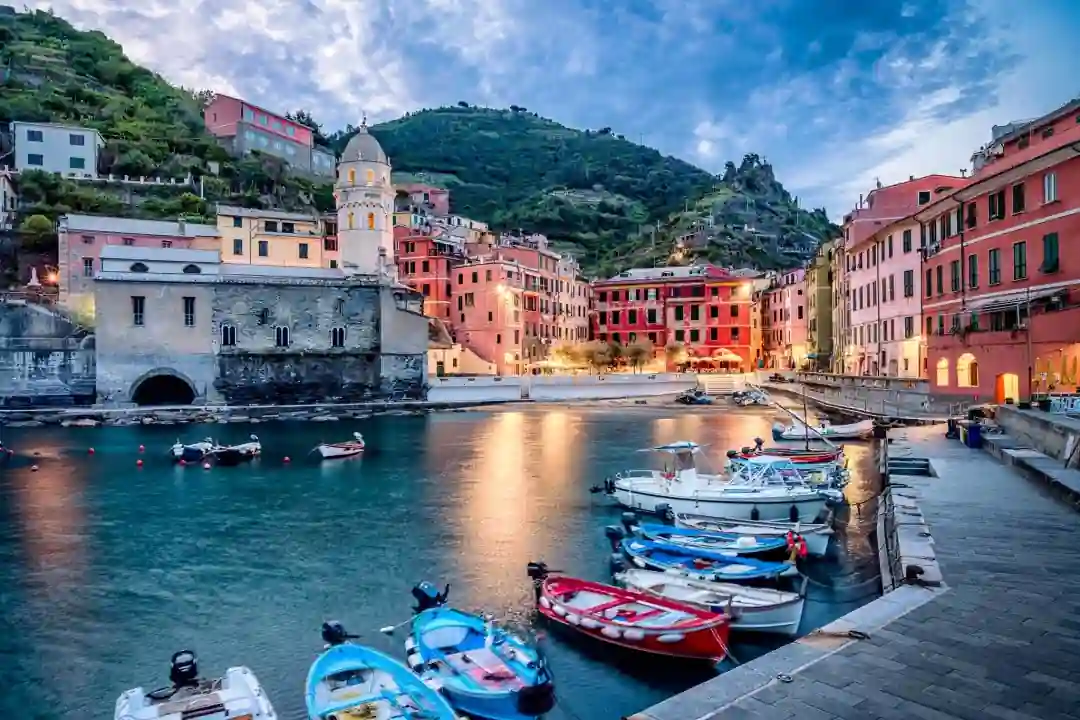
Vernazza is often the Cinque Terre village people dream about before they even land in Italy. Of the five, it’s the most iconic and, for me, the most atmospheric.
After hiking the rugged trails between Monterosso and Vernazza multiple times, I’ve always felt that moment when the town comes into view—pastel houses tumbling down toward the harbor, the Spiaggia del Castello just visible below, and fishing boats rocking gently in the Ligurian Sea.
Few beautiful coastal cities in Italy capture that postcard feeling quite like this.
Highlights & Things to Do
- Climb to Castello Doria for panoramic views (the tower is small but the perspective is vast).
- Swim in the tiny harbor beach after your hike—locals and visitors share the same rocky cove.
- Stop by Santa Margherita d’Antiochia Church, right at the water’s edge.
Food & Drink: Pesto here tastes different than anywhere else—I learned from a Ligurian cook that it’s because of the local basil and pine nuts. Pair it with a glass of Sciacchetrà, Cinque Terre’s sweet wine.
Best Time to Visit: Spring or fall. Summer can overwhelm these narrow alleys.
Transport Hub: La Spezia Centrale connects Cinque Terre to the Italian rail network.
Where to Stay:
- Luxury: Boutique guesthouses overlooking the cove
- Mid-Range: Albergo Barbara
- Budget: Small family B&Bs in nearby Corniglia
Insider Tip: Hike early in the morning—before 8 a.m. I once had the trail to myself, watching the sun rise over the Ligurian cliffs.
Drawback: Vernazza’s size means limited accommodations. Book months ahead.
6. Positano (Amalfi Coast, Campania) – Icon of the Coast

No list of top coastal cities in Italy would be complete without Positano. I’ve been here during both the chaotic high season and the quieter weeks of October, and the difference is night and day.
At its best, Positano feels like a vertical village clinging to cliffs, where every turn offers another dazzling view of the Tyrrhenian Sea.
Highlights & Things to Do
- Lounge on Spiaggia Grande, the main beach where boats depart for Capri.
- Take the cliffside path to Fornillo Beach, smaller and more relaxed.
- Explore Positano’s restaurants tucked into alleyways—some still run by the same families for generations.
Food & Drink: Fresh seafood pastas, local limoncello, and creamy delizia al limone desserts. The citrus here really does taste brighter.
Best Time to Visit: Late September is ideal—swimmable seas but manageable crowds.
Transport Hub: Naples International Airport is the closest, followed by a train to Sorrento and then buses or ferries.
Where to Stay:
- Luxury: Le Sirenuse
- Mid-Range: Hotel Savoia
- Budget: Family-run B&Bs uphill (with steep stair climbs).
Insider Tip: Skip the crowded sunset spots and climb toward Villa Rufolo in Ravello for views that stretch over the Amalfi Coast.
Drawback: Stairs, stairs, and more stairs—Positano isn’t kind to travelers with mobility issues.
7. Amalfi (Campania) – Compact and Cultural
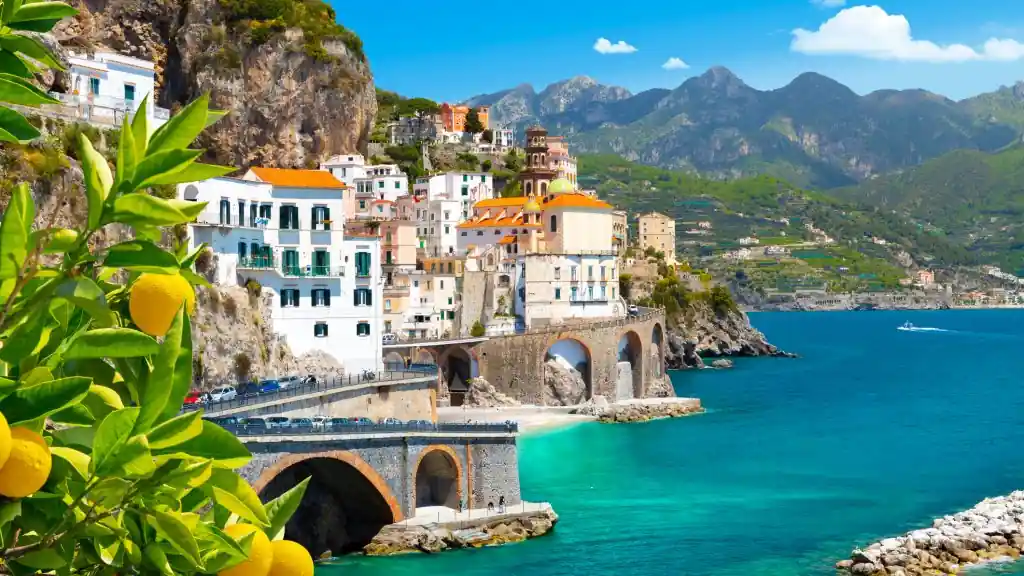
Unlike its glamorous neighbor Positano, Amalfi itself is more approachable and, in some ways, more authentic. I’ve often used Amalfi as a base because of its balance: a historic core, great food, and easy access to ferries for day trips.
It’s one of the most popular coastal cities in Italy, but walk just a few minutes away from Piazza del Duomo and you’ll find quiet lanes where locals hang laundry above your head.
Highlights & Things to Do
- Admire the Amalfi Cathedral with its striking striped façade and Arab-Norman influences.
- Visit the Paper Museum, tucked inside an old mill that tells of Amalfi’s medieval trading days.
- Take a short bus ride to Vietri sul Mare, known for its ceramics and nearby Spiaggia del Castello.
Food & Drink: Amalfi’s scialatielli ai frutti di mare (a thick local pasta) became my go-to dish after long ferry days. Pair it with a crisp Falanghina wine.
Best Time to Visit: May or early October, when ferries are running but the summer rush has eased.
Transport Hub: Naples Airport, with connections via Salerno port.
Where to Stay:
- Luxury: NH Collection Grand Hotel Convento di Amalfi
- Mid-Range: Boutique stays in the town center
- Budget: Guesthouses uphill, often with balcony views.
Insider Tip: Visit the Furore Fjord, a hidden inlet between Amalfi and Positano that many travelers skip.
Drawback: Amalfi’s compact streets can feel crowded in peak season, especially around Piazza Tasso.
8. Sorrento (Campania) – Easy Hub for Capri & Pompeii
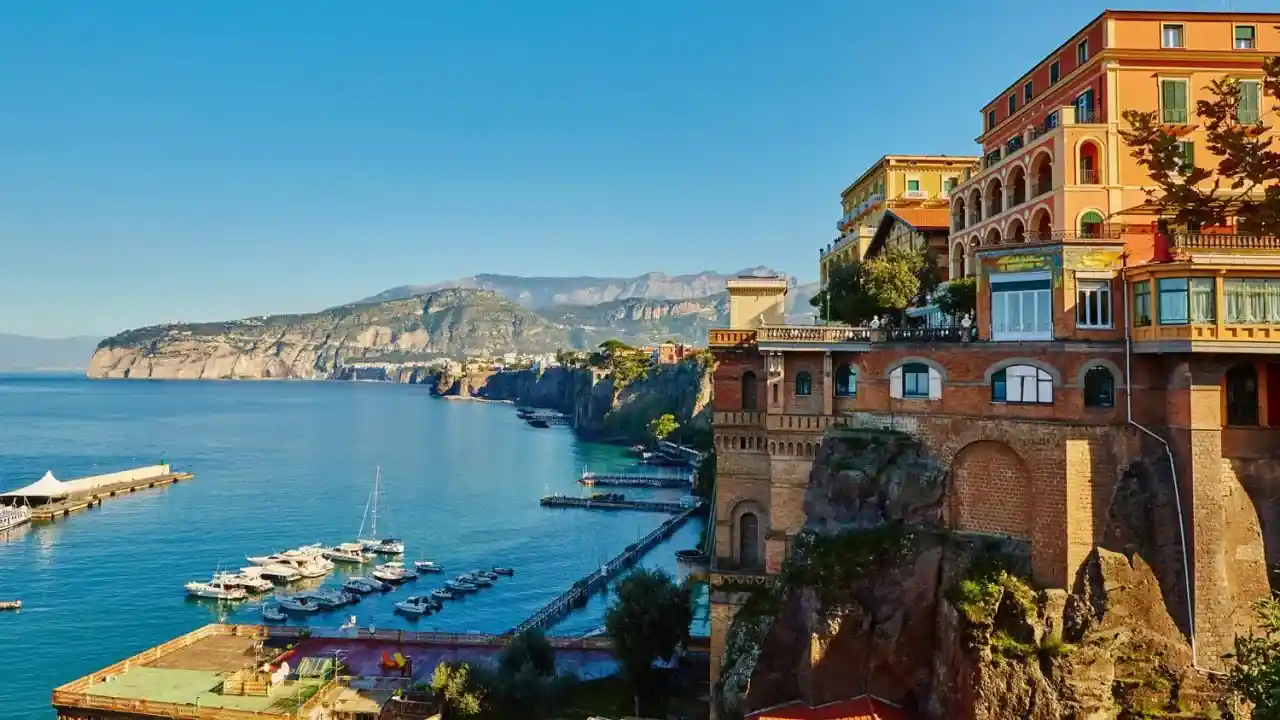
Sorrento often serves as the gateway to the Amalfi Coast, but it’s more than just a jumping-off point. I’ve returned here multiple times because of its balance: accessibility, charm, and those sunset views across the Bay of Naples with Mt. Vesuvius in the distance.
Among the best coastal cities in Italy to visit, Sorrento stands out for families and first-timers—it’s walkable, welcoming, and well connected.
Highlights & Things to Do
- Stroll through Piazza Tasso, the lively heart of town.
- Visit the cloister of San Francesco—a serene spot I stumbled upon during a crowded August afternoon.
- Take a ferry to Capri or a day trip to Pompeii.
Food & Drink: Sorrento is the land of lemons. Try gnocchi alla sorrentina with mozzarella, and don’t leave without a glass of fresh limoncello.
Best Time to Visit: Year-round, though spring and fall bring cooler air and fewer crowds.
Transport Hub: Naples International Airport with a quick train connection to Sorrento.
Where to Stay:
- Luxury: Grand Hotel Excelsior Vittoria
- Mid-Range: Hotel Regina Sorrento
- Budget: Guesthouses near the marina
Insider Tip: Skip the busy Marina Grande beach—locals often prefer small swimming platforms tucked below the cliffs.
Drawback: Tour buses can make the town feel overrun in high season.
9. Tropea (Calabria) – Coast of the Gods
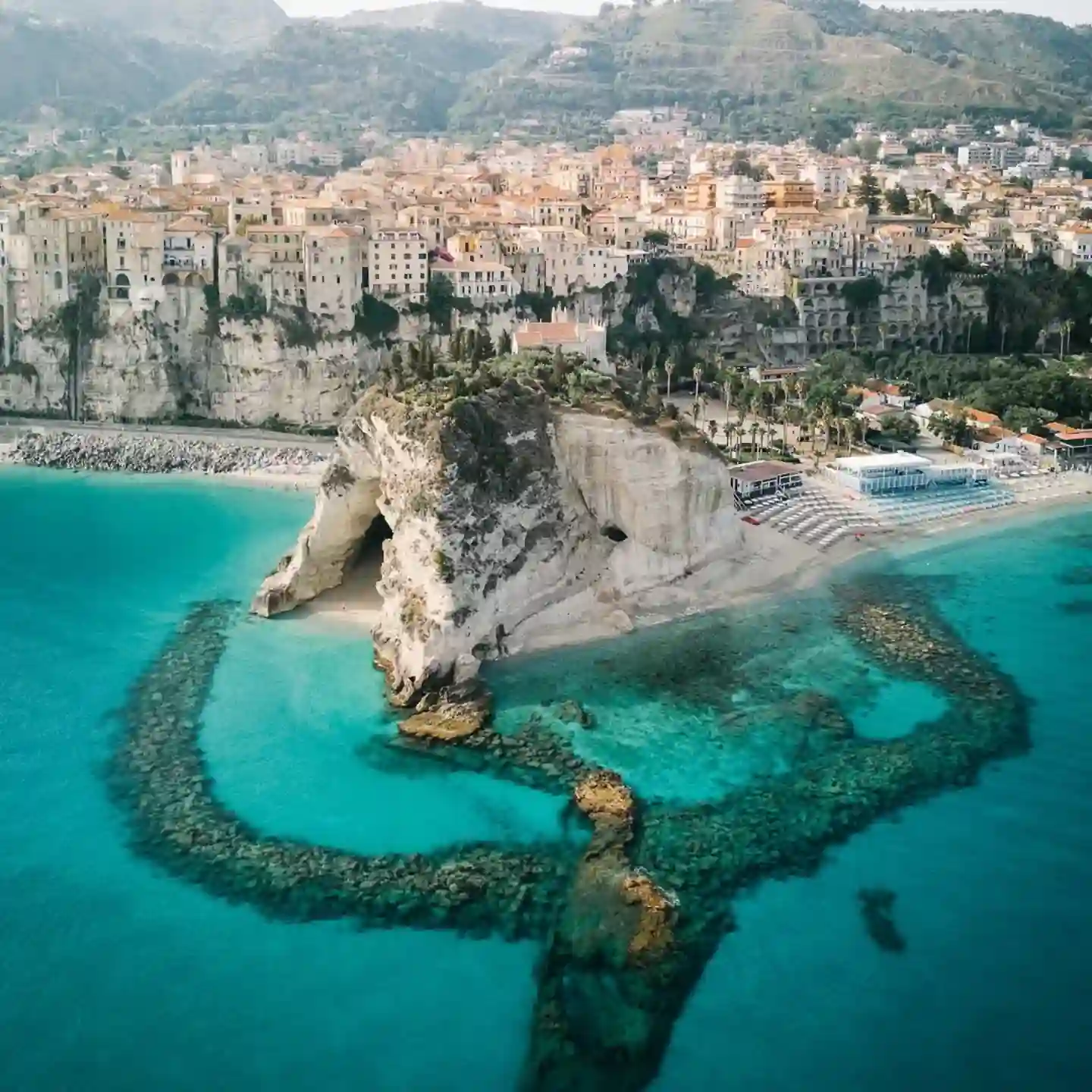
Tropea is one of those cheap coastal cities in Italy that still feels untouched compared to Amalfi or Cinque Terre. I spent a week here exploring Calabria’s rugged coastline, and it struck me how authentic daily life feels—grandmothers gossiping in piazzas, fishermen mending nets along the shore, children playing football by the cliffs. Known as the Costa Viola, this stretch of the Tyrrhenian Sea glows purple at sunset.
Highlights & Things to Do
- Walk up to Santa Maria dell’Isola, a monastery perched dramatically on a rock.
- Swim at Spiaggia del Prolungamento, one of the region’s Blue Flag beaches.
- Take a boat trip to the Aeolian Islands, where Stromboli often rumbles at night.
Food & Drink: Tropea is famous for its sweet red onions—you’ll find them grilled, caramelized, even made into jam. Fileja pasta with nduja (spicy sausage) is a Calabrian specialty.
Best Time to Visit: Summer, when the beaches are at their most inviting, though September is quieter.
Transport Hub: Lamezia Terme Airport, about an hour away.
Where to Stay:
- Luxury: Boutique hotels overlooking the cliffs
- Mid-Range: Villa Antica Tropea
- Budget: Family-run pensions in the old town
Insider Tip: From the cliffs, sunsets rival anywhere in Italy. I once saw the Aeolian Islands silhouetted perfectly against a fiery sky—it felt otherworldly.
Drawback: Public transport is limited, so renting a car makes exploration easier.
10. Polignano a Mare (Puglia) – Cliff-Diving Capital
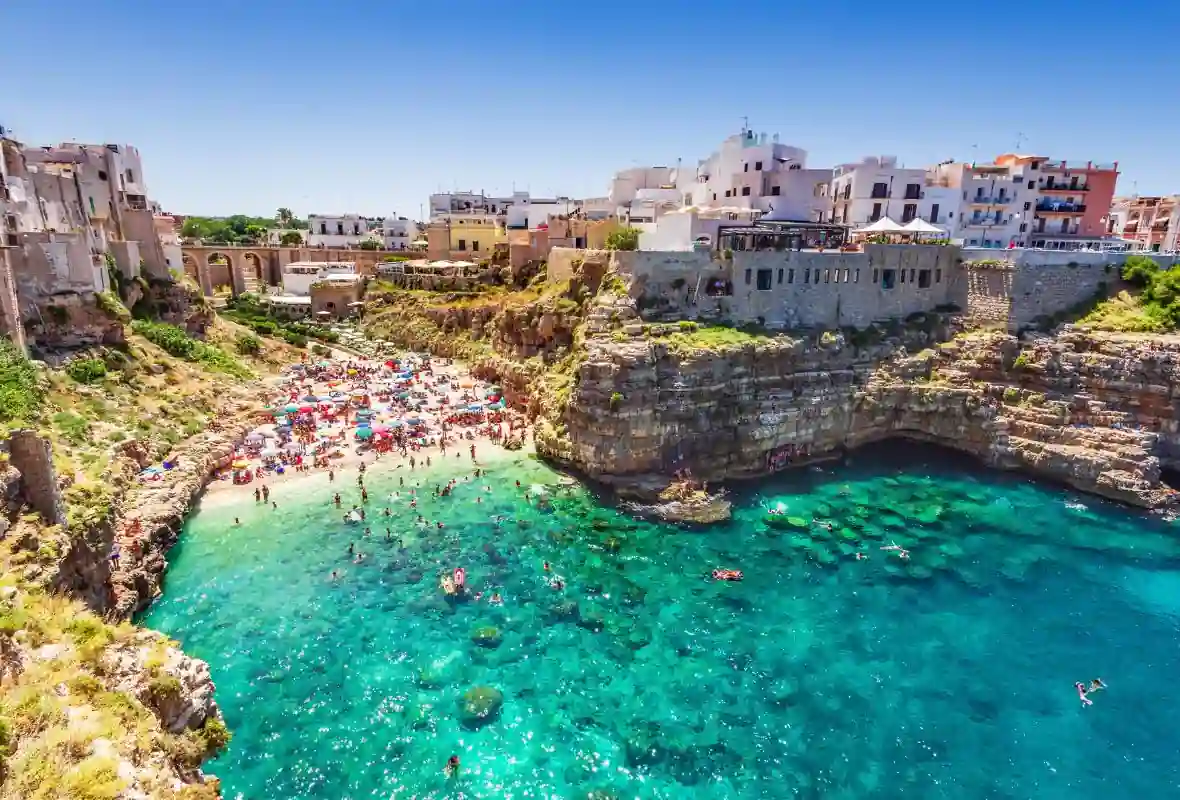
If you’ve seen photos of daring divers leaping into turquoise waters from limestone cliffs, chances are it was Polignano a Mare.
This town in Puglia has grown famous in recent years, yet it still retains its charm. Of all the coastal cities in Italy with airports nearby, this is one of the easiest—Bari Airport is just a short train ride away.
Highlights & Things to Do
- Watch or join cliff divers at Lama Monachile Beach—I’ve braved a jump here myself (not as graceful as the pros).
- Explore sea caves by boat, including the legendary Grotta Palazzese, where you can dine inside a grotto.
- Wander the old town’s whitewashed lanes, filled with poetry written on doorways.
Food & Drink: Try the local specialty panino di pesce (fresh fish sandwich) and, of course, Puglia’s olive oil and orecchiette pasta.
Best Time to Visit: Summer for diving and beach life; September if you want space to breathe.
Transport Hub: Bari Airport with regular train service to Polignano.
Where to Stay:
- Luxury: Grotta Palazzese Hotel
- Mid-Range: Malù Bed & Breakfast
- Budget: Guesthouses near the historic center
Insider Tip: Stand at the Balconata sul Mare at night—it’s where locals gather, and the Adriatic feels endless.
Drawback: The main beach gets crowded in summer, so arrive early or explore less-known coves nearby.
11. Taormina (Sicily) – Greek Theater & Etna Views
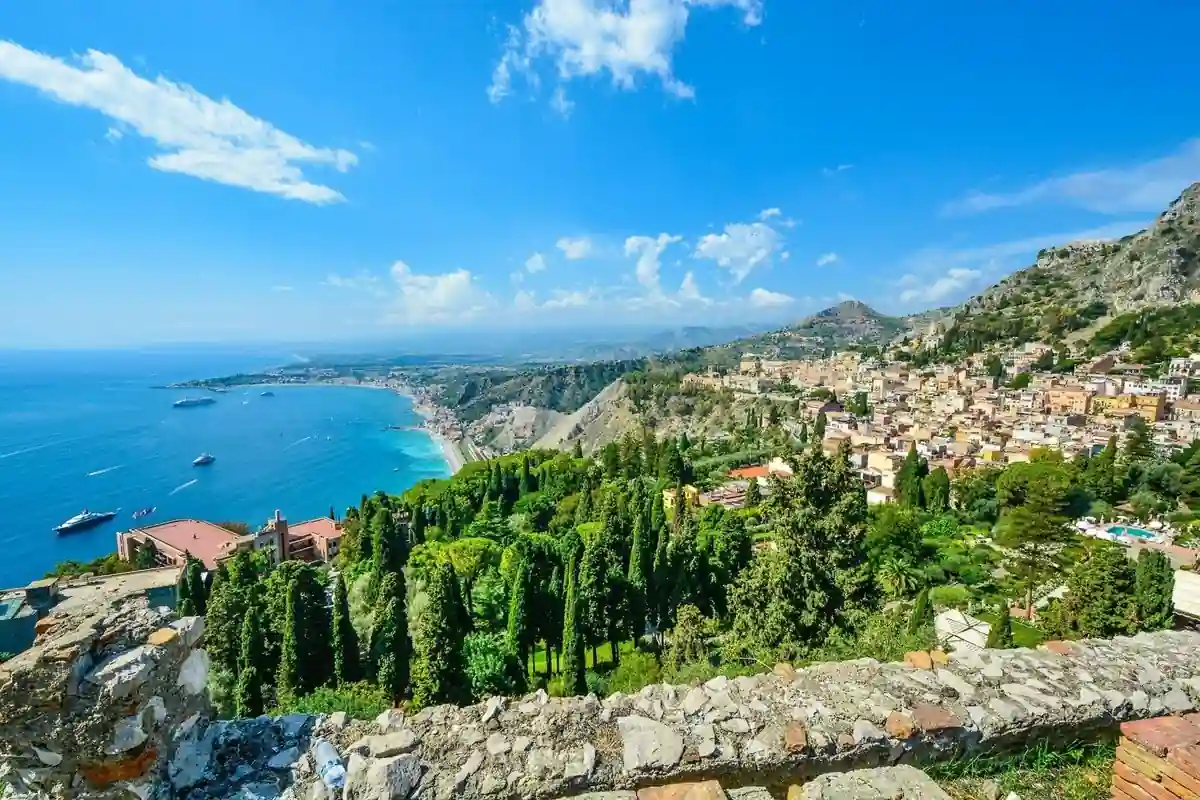
Taormina is one of those places that stays in your memory forever. I first visited during a June assignment with a Sicilian guide who insisted I attend a performance at the ancient Greek theater.
As the sun dipped behind Mount Etna, the stage lit up with music and the Ionian Sea shimmered below—it was pure magic. Among the famous coastal cities in Italy, Taormina stands apart for its fusion of history, drama, and natural spectacle.
Highlights & Things to Do
- Watch a concert or opera at the Teatro Greco, one of the most stunning ancient venues in Europe.
- Take a cable car down to Mazzarò Beach or the islet of Isola Bella.
- Explore Giardini Naxos, the first Greek colony in Sicily, just down the coast.
Food & Drink: Sicilian arancini, granita with brioche, and seafood pastas flavored with Etna-grown pistachios. Taormina’s terrace cafés serve the best people-watching with your espresso.
Best Time to Visit: Spring and fall—summer is crowded and hot.
Transport Hub: Catania Airport, then a one-hour bus or train ride.
Where to Stay:
- Luxury: Belmond Grand Hotel Timeo (legendary Etna views)
- Mid-Range: Villa Belvedere
- Budget: Small guesthouses in Giardini Naxos
Insider Tip: Take a boat tour around Capo Taormina at sunset. I once swam in a hidden grotto where the light made the water glow sapphire.
Drawback: Taormina is one of the least cheap coastal cities in Italy—expect premium prices for dining and stays.
12. Cefalù (Sicily) – Norman Cathedral & Sandy Beach
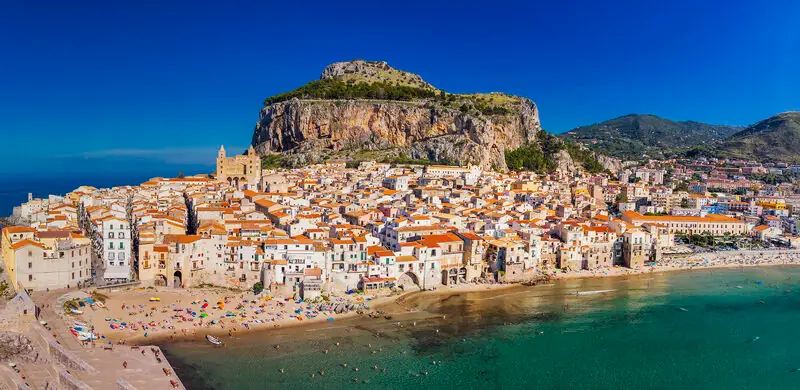
Cefalù feels like a film set, and in fact, it has been one—cinema buffs might recognize it from “Cinema Paradiso.” I spent nearly two weeks here one summer, mixing lazy beach days with slow explorations of its medieval lanes.
If you’re looking for small coastal cities in Italy with big personality, Cefalù is it. The town combines sandy beaches, UNESCO-listed history, and authentic Sicilian energy.
Highlights & Things to Do
- Visit the Norman Cathedral, with its stunning mosaics of Christ Pantocrator.
- Climb La Rocca, the limestone promontory towering over town, for panoramic views.
- Relax at Spiaggia di Cefalù, one of Sicily’s most inviting sandy stretches.
Food & Drink: Pane con panelle (chickpea fritters) from a street stall, grilled swordfish, and cannoli from family-run pasticcerie.
Best Time to Visit: Summer for the beach, but September offers warm seas without the crowds.
Transport Hub: Palermo Airport, with a direct train link to Cefalù.
Where to Stay:
- Luxury: Le Calette N.5
- Mid-Range: Hotel La Plumeria
- Budget: Guesthouses in the old town
Insider Tip: Stroll along the old fisherman’s quarter at dusk. I once joined locals diving off the stone pier—one of my most spontaneous evenings in Sicily.
Drawback: The beach fills quickly in August, when Italians flock here for Ferragosto.
Travel Logistics & Practical Tips
After years of zig-zagging across the country, I’ve learned that the difference between a smooth Italian trip and a frustrating one often comes down to logistics. The best coastal cities in Italy may look close together on a map, but traveling between them requires some planning. Here’s what to know before you set off:
Getting Around
Trains remain the backbone of coastal travel. Trenitalia and Italo connect major hubs like Naples, Genoa, Venice, and Bari, with regional lines reaching smaller towns.
For example, the train from Naples to Sorrento is quick and budget-friendly, while La Spezia Centrale serves as the perfect jumping-off point for Cinque Terre. Ferries are equally essential—whether it’s crossing the Strait of Messina into Sicily, hopping from Sorrento to Capri, or cruising the Amalfi Coast between Vietri sul Mare and Positano.
Buses fill the gaps but can test your patience in summer traffic. Car rentals work best for remote gems like Tropea or exploring hidden coves near Capo Carbonara, though you’ll need confidence behind the wheel.
Driving & ZTL Zones
One mistake I made early on was driving straight into a historic center—cue a hefty fine for ignoring Italy’s ZTL zones (restricted traffic areas).
Many Italian coastal towns enforce these to protect their walkable centers. My advice: park on the outskirts and enjoy the stroll in. Clifftop towns like Positano or Amalfi are notorious for scarce parking—arrive early or book accommodations that include a space.
Heat & Crowds
In July and August, temperatures along the Tyrrhenian Sea can hit 35°C (95°F), and crowds surge, especially in popular coastal cities in Italy like Positano or Portofino. Coping strategies I’ve learned:
- Start exploring by 7 a.m., when towns are at their most peaceful.
- Plan a “beach day” at Spiaggia Fornaci (Savona) or Soleluna Beach to escape the inland heat.
- Use siesta hours (1–4 p.m.) for long lunches in shaded trattorias or even a nap.
Budgeting: Luxury vs. Cheaper Gems
Not every destination will empty your wallet. Portofino and Taormina lean luxury, with boutique hotels and high-end dining.
On the other hand, Camogli, Tropea, and Cefalù remain some of the most cheap coastal cities in Italy, where €50–70 per night can still get you a cozy B&B. I’ve often advised friends to split time—three nights in a splurge city, then balance with a stay in a more affordable village.
Responsible Travel
One of the most important lessons I’ve learned is that our choices as travelers directly impact these fragile communities. Overtourism has strained places like Venice and Cinque Terre. Travel responsibly by:
- Supporting family-run businesses instead of international chains.
- Respecting local rhythms—don’t photograph without permission, and remember Sunday is still a rest day in many coastal cities in Italy.
- Exploring lesser-known spots like Costa Viola or Grotta della Sciabella instead of only the icons.
By balancing famous hotspots with authentic, smaller towns, you’ll not only enrich your own trip but also give back to the communities that make Italy’s coast such a paradise.
Suggested Coastal Itineraries
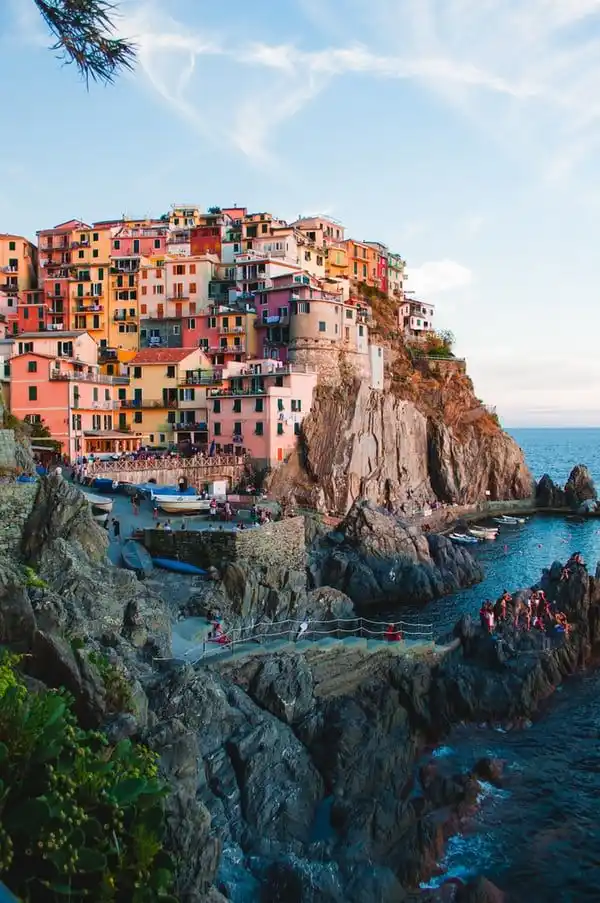
Over the years, I’ve tested different routes across the Italian coastline—sometimes in short bursts, sometimes over long stays. What I’ve learned is that the magic comes from weaving together contrasting places: luxury with authenticity, history with leisure, famous icons with small coastal cities in Italy that feel personal and untouched. Here are four tried-and-true itineraries:
Romantic 7-Day Escape: Positano → Amalfi → Ravello → Capri
For couples, nothing rivals the Amalfi Coast. Start in Positano, where cascading pastel houses and intimate restaurants make evenings unforgettable.
Spend two nights here before moving to Amalfi, smaller but rich in culture, with landmarks like the Amalfi Cathedral and quick access to Vietri sul Mare.
On day five, travel uphill to Ravello, where villas like Villa Rufolo and Villa Cimbrone offer sweeping views that feel cinematic. End with a ferry ride to Capri, enjoying the Blue Grotto or simply wandering Piazza Umberto I with a glass of limoncello.
Why it works: A blend of glamour, history, and intimacy—all within easy reach of Naples International Airport.
Luxury Lovers: Portofino → Amalfi → Taormina
If your style leans five-star hotels, yacht harbors, and world-class dining, this route is pure indulgence. Begin in Portofino, staying at Splendido Mare or enjoying aperitivos by the harbor.
Fly south to Naples, then continue to Amalfi, where cliffside resorts balance luxury with history. Finally, head to Taormina in Sicily, where evenings at the Greek Theater with Mount Etna glowing in the distance feel surreal.
Why it works: This trio covers three of the most famous coastal cities in Italy, each with a distinct luxury personality—Liguria’s Riviera chic, Campania’s timeless romance, and Sicily’s cultural grandeur.
Family-Friendly: Sorrento → Camogli → Cefalù
For families, convenience and walkability matter. Start in Sorrento, where ferries, Pompeii excursions, and kid-friendly dining make logistics easy.
Next, head north to Camogli, one of the most beautiful coastal cities in Italy that still feels authentic—children can safely explore its small harbor while parents enjoy Ligurian focaccia.
Finish in Cefalù, where the sandy Spiaggia di Cefalù and Norman cathedral keep both kids and adults entertained.
Why it works: Combines practicality with authenticity—each city has a walkable center, family services, and beaches safe for younger travelers.
Adventure & Hiking: Cinque Terre (Vernazza) → Polignano a Mare → Tropea
This itinerary is for travelers who prefer sweat, cliffs, and adrenaline. Begin in Vernazza, hiking between Cinque Terre’s villages and cooling off with swims in rocky coves.
Fly to Bari and head to Polignano a Mare, where cliff diving and cave boat trips await. End in Tropea, perched above the Costa Viola, where hikes, hidden beaches, and spicy Calabrian food give the journey a raw, authentic close.
Why it works: Perfect for those who want coastal cities in Italy with action—hiking, diving, and dramatic landscapes instead of just lounging.
Pro Traveler Tip: Each itinerary can be expanded into 10–14 days by adding nearby gems. For example, pair Portofino with Santa Margherita, or combine Sorrento with Ischia’s thermal baths. Over the years, I’ve found that mixing a popular coastal city in Italy with a lesser-known neighbor creates balance—luxury one night, authenticity the next.
Conclusion: Italy’s Coast Awaits
After more than a decade of journeys, I can say with confidence that no matter how many times you return, the best coastal cities in Italy always reveal something new. One year it’s sipping espresso in a quiet piazza in Camogli, another it’s watching fire glow from Stromboli while standing on the cliffs of Tropea.
Even in the more famous coastal cities in Italy like Venice or Positano, there are still corners where life feels timeless—fishermen repairing nets, children playing in walkable centers, neighbors sharing stories by the sea.
Each region carries its own flavor. The Ligurian Sea offers rugged cliffs and pesto. The Tyrrhenian Sea gives you lemons, music, and cathedrals. Sicily adds drama with Mount Etna as its backdrop, while Puglia tempts you with caves, cliff dives, and poetry scribbled on whitewashed walls.
From luxury escapes like Portofino and Taormina to cheap coastal cities in Italy like Tropea or Camogli, there’s a destination for every style, every budget, every dream.
What has stayed with me most is the rhythm of life along the coast. Mornings of fishermen returning to Spiaggia del Prolungamento, afternoons wandering UNESCO sites like Villa Cimbrone, and evenings when the air smells of grilled fish and sea salt. These aren’t just travel moments—they’re cultural rituals that shape daily life in Italian coastal towns.
So whether you’re chasing adventure in Polignano a Mare, culture in Amalfi, or family time in Sorrento, remember to travel slowly, respectfully, and with curiosity. The most beautiful coastal cities in Italy are not only paradise for the eyes—they’re living, breathing communities that welcome us, teach us, and remind us why the sea has always called travelers back.
Pack light, keep your heart open, and let Italy’s coastline work its quiet magic on you.
Frequently Asked Questions
1. What is the most beautiful coastal city in Italy?
It depends on what you’re seeking. Many consider Positano or Vernazza the most beautiful coastal cities in Italy for their postcard views. Personally, after hiking Cinque Terre multiple times, Vernazza’s cove at sunrise still takes my breath away.
2. Which is better: Amalfi Coast or Cinque Terre?
The Amalfi Coast feels grand and glamorous—think Villa Rufolo, Furore Fjord, and limoncello terraces. Cinque Terre is rugged and intimate, with cliffside trails and tiny harbors. If it’s your first trip, Amalfi is easier to reach, but for hiking and authenticity, Cinque Terre wins.
3. What’s the cheapest coastal city in Italy?
Tropea in Calabria and Camogli in Liguria are among the cheapest coastal cities in Italy. I’ve stayed in Tropea guesthouses for under €60 a night, with meals that cost half of what you’d pay in Portofino.
4. When’s the best time to visit Italian seaside towns?
April–June and September–October are golden months. The sea is warm, crowds thin, and towns like Amalfi, Cefalù, and Polignano a Mare feel relaxed. July and August bring intense heat and overtourism in famous coastal cities in Italy like Venice and Positano.
5. Do I need a car for coastal Italy?
Not everywhere. Trains and ferries cover most of the top coastal cities in Italy. But for small coastal cities in Italy like Tropea or hidden coves in Sardinia near Capo Carbonara, a rental car helps. Just beware of ZTL zones and scarce parking.
6. Which coastal city has the best beaches?
For sandy stretches, Cefalù and Spiaggia di Tropea rank high. For dramatic settings, Polignano a Mare’s Lama Monachile and the coves around Costa Viola are unforgettable. Many coastal cities in Italy earn Blue Flags, meaning clean and well-managed beaches.
7. Which city is best for foodies?
I’d say Naples and Sorrento for pizza and limoncello culture, Camogli for seafood and focaccia, and Taormina for Sicilian specialties like arancini and pistachio pasta. Every region adds its own twist—eating is half the joy of exploring Italian coastal towns.
8. Are there coastal cities in Italy near Rome?
Yes—Sperlonga and Anzio are quick escapes, though smaller than Amalfi or Cinque Terre. They’re great for Romans needing a weekend by the Tyrrhenian Sea. For bigger trips, you can reach Sorrento or Amalfi from Rome in a few hours by train and bus.
9. Which coastal cities in Italy have airports nearby?
Venice, Bari (for Polignano a Mare), Naples (for Amalfi Coast and Sorrento), Palermo (for Cefalù), and Catania (for Taormina) all have airports close by. This makes combining multiple coastal cities in Italy to visit easier if you’re short on time.
10. What’s the best coastal city in Italy for families?
Sorrento is my top pick—walkable, safe, and well connected for day trips. Cefalù is another gem, with shallow sandy beaches. Both rank among the best coastal cities in Italy to visit if you’re traveling with children.

